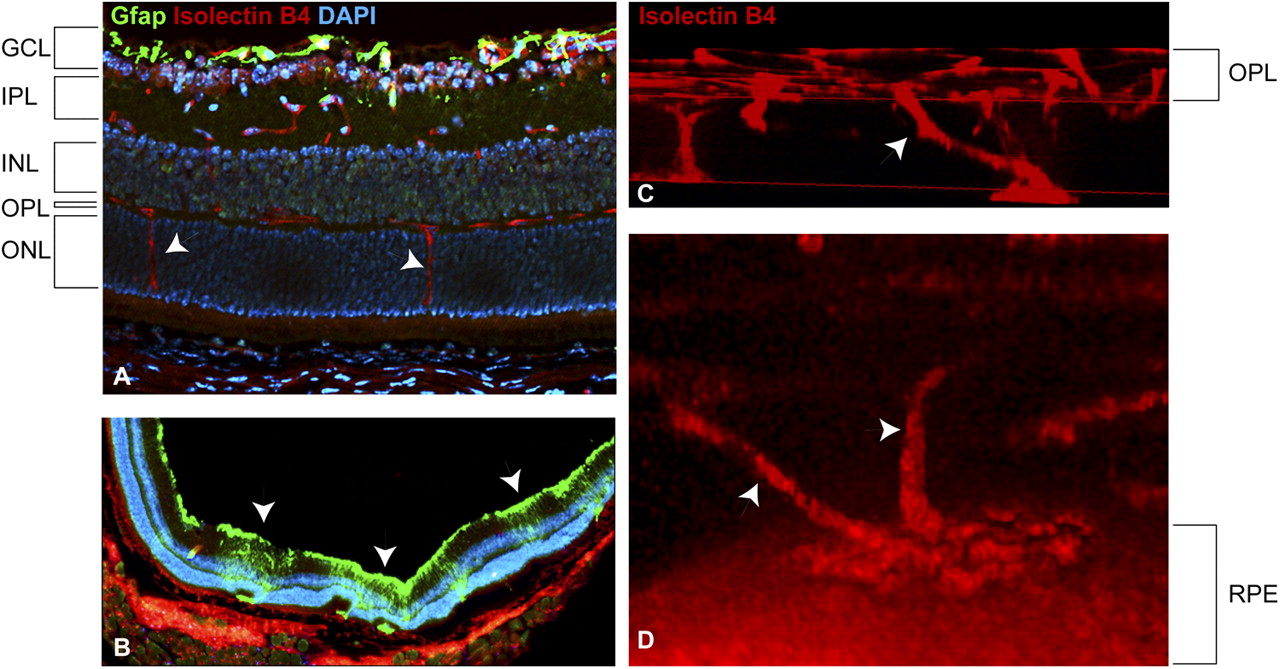Angiogenesis | Overview
Our lab uses several methods in addition to our oxygen induced retinopathy (OIR) and choroidal neovascularization (CNV) models to investigate factors regulating vascular development.
Diet and Angiogenesis
We are currently investigating the role of w-3 and w-6 long chain poly unsaturated fatty acids (LCPUFAs) in vascular development and have found that w-3 LCPUFAs can help reduce harmful neovascularization through antiangiogenic metabolites of cyclooxygenase and lipoxygenase. Read Here We are currently investigating other metabolic pathways that possess unique angiogenic properties.
Retinal Angiomatous Phenotype (RAP)
Mice with the gene for Very-low-density Lipoprotein Receptor (VLDLR) knocked out display a phenotype similar to RAP. The blood vessels in the retina dive down from the vessel layer to the deeper subretinal space and eventually causing disruption of the RPE among other complications. Read Here

Above: Images of pathologic neovascularization in VLDLR-/- mouse retina. (A) Cross section of mouse retina at postnatal day (P) 15, illustrating isolectin B4 stained vessels diving from the OPL, where vessels usually stop, towards the photoreceptor layer. At P30 the neovascularization is more complete (B) and 3D reconstruction shows the subretinal neovascularization mass on the RPE. Source: Hua J, Guerin KI, Chen J, et al. Resveratrol inhibits pathologic retinal neovascularization in Vldlr(-/-) mice. Invest Ophthalmol Vis Sci. 2011;52(5):2809-16.
Our lab investigates factors regulating this development and possible implications for other eye diseases such as age-related macular degeneration and macular telangiectasia.
